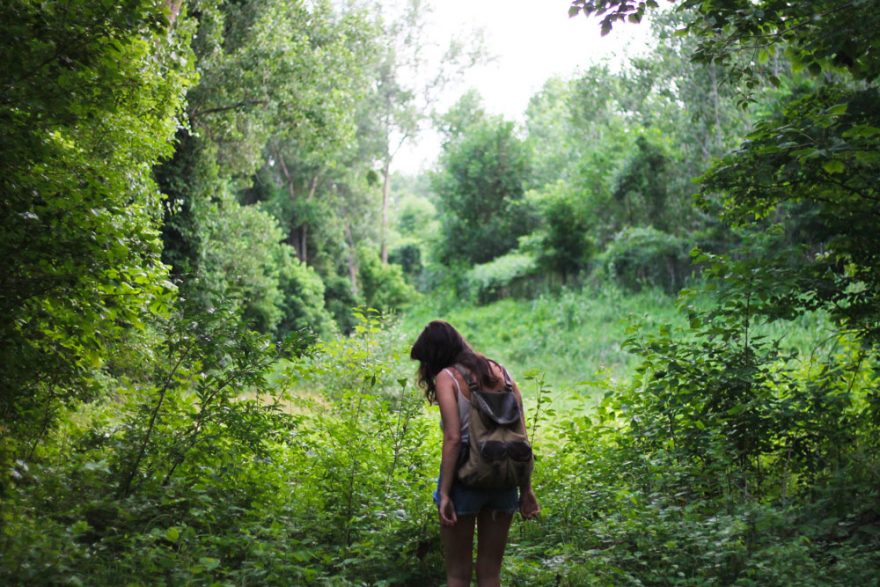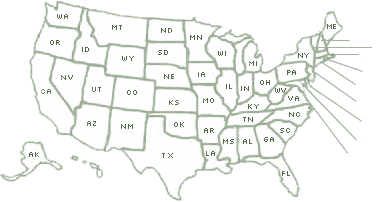
When you’re in the middle of a hike, the last thing you want is to end up with a nasty rash from a poisonous plant.
If you end up on an overgrown trail, you further increase your risk of coming across poison ivy or some other irritating plant. The best way to avoid these is to learn how to identify them.
Before you head off on your next hike, be sure to get to know these dangerous plants, unless you want to end up with skin and eye irritation, or other nasty symptoms.
Poison Ivy

Everyone’s heard of poison ivy, so most people know what to look out for. They cause horrible rashes that cause unbearable itching and blistering. The rash usually starts about 12 to 72 hours after contact, so you probably won’t notice it straight away.
The plant can look different depending on where it’s growing, but here are some things to look out for:
- 3-parted compound leaves
- Low trailing shrub, climbing vine, high free-standing shrub or upright bush
- Green leaves in summer, red leaves in the fall
- Leaves can be both dull and shiny
The best thing to do if you make contact is to wash your skin as soon as you can with soap and water. You can also purchase over the counter remedies, including calamine lotion, Ivy Block, and zinc oxide.
If you do end up with a rash, avoid scratching it as this will help to spread the urushiol oil found in its glossy leaves, roots, and branches to other parts of your body.
If you know you’ll be coming across this irritating plant, then you might want to cover up. Wear long pants, shirts with long sleeves and tuck your pants into your boots. You may even want to consider gloves, if necessary.
You can also get an FDA approved lotion, bentoquatam, that helps provide some protection, but your best bet is to avoid it altogether.
Range: Throughout the US, except Alaska and Hawaii
Poison Oak

By Leonard G. at English Wikipedia – Transferred from en.wikipedia to Commons by IngerAlHaosului using CommonsHelper., CC SA 1.0, https://commons.wikimedia.org/w/index.php?curid=9015511
Much like poison ivy, this plant causes an itchy rash if you come into contact with it. Follow the same guidelines and cover your skin to avoid contact.
If it does touch your skin, then be sure to wash the area with soapy water. If you need a poison oak remedy, look for Technu or try calamine lotion.
Depending on where it’s growing, it can vary in appearance, so look out for:
- Glossy, lobed, oak-like leaves
- Leaves range from bright red to green depending on the season
- Similar to poison ivy, but grows erect
- Western Pacific poison oak can grow over 8ft high as a shrub-like climbing plant
- Eastern poison oak, like poison ivy, has leaves that grow in groups of 3 and produces white berries
Even if only your clothes come into contact, you need to be careful. The oil can linger on the clothes, so wash at the highest temperature and handle with gloves.
Range: Western North America
Stinging Nettle

CC BY-SA 3.0, https://commons.wikimedia.org/w/index.php?curid=369351
While not really poisonous, you should still avoid these plants. They contain chemicals that cause immediate skin irritation if you come into contact with them. Your skin will sting and blister, but you should avoid scratching infected areas.
Learn to identify the plant and look out for:
- Finely toothed, tapered leaves about 2-5 inches’ long
- Leaves have indented veins, are pointed at the tip, with a heart-shaped base
- Fine hairs on the leaves and stems
- Small, fuzzy-like white flowers
If you come into contact with this plant, wash the area straight away with clean hands, and don’t forget to clean your hands again afterward. You can get over the counter itch reliever, including calamine lotion.
Range: Throughout the US and Canada
Poison Sumac
Also known as “thunderwood,” this plant is another one of poison ivy’s cousins. However, the rash it causes is even worse than those caused by poison ivy or poison oak, so be extra careful with these.
They are one of the most poisonous plants in the US, so don’t leave any skin uncovered. Here’s what to look out for:
- Grows into a small tree
- Can grow up to 30ft in height
- Found exclusively in swamps, and boggy, wet areas
If you come in contact with this plant, immediately wash your skin. The rash can last 5 to 12 days, so get yourself some hydrocortisone cream to alleviate the itching.
Whatever you do, don’t try to burn this plant. The oil can be carried by smoke into your lungs and in some rare cases cause your lungs to fill with fluid. The fluid can cause fatal suffocation, so it’s a plant you need to take seriously.
Range: Eastern US and Canada

 Your Privacy Choices
Your Privacy Choices


 The
The